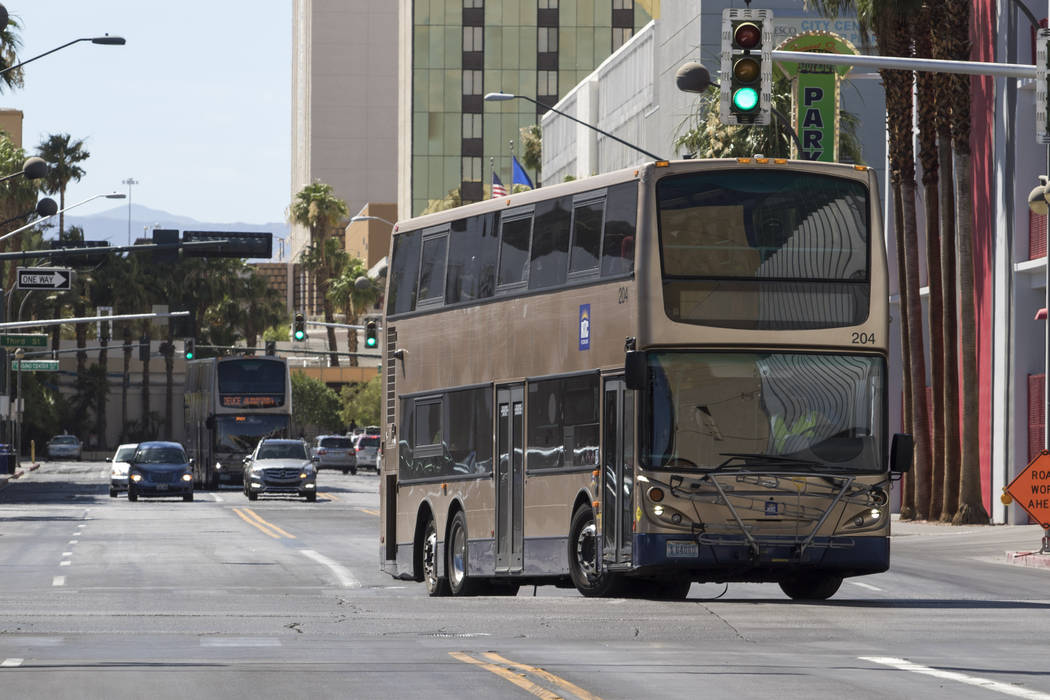Dwindling Las Vegas Strip bus ridership concerns officials
As the use of ride-hailing increases around the Las Vegas Valley, especially along the Strip, bus use in the area continues to fall.
Regional Transportation Commission bus ridership along the resort corridor has steadily dropped over the past three years, according to RTC data, coinciding with the introduction of transportation network companies such as Uber and Lyft.
Bus revenue on the Strip fell 18 percent between October 2015 and December 2018, the data showed.
The resort corridor route is the RTC’s cash cow, but with the continued drop, the service isn’t as lucrative as it once was, RTC General Manager Tina Quigley said last month in her presentation to a legislative committee in Carson City.
“There was a time when we made a $6 million profit in operating the resort corridor,” Quigley said. “There’s no such thing as a profit in the world of transit.”
The farebox return average — the ratio of operating expenses covered by passengers’ paid fares — nationwide is about 20 percent, Quigley said, but in Las Vegas that return is about 50 percent.
If the revenue decline continues, “this drop is going to start having a significant effect on us moving forward,” she said. “We’re at a point where we’re going to start looking at the service and start considering what we’re going to do moving forward.”
While the emergence of ride-hailing in the market plays a significant role in diminished revenue, it’s an oversimplification to single out one reason as the cause, according to Austin Brown, executive director of the UC Davis Policy Institute, who has published studies on the ride-share effect on mass transit.
“When we interview people and ask what, if they didn’t take an Uber or a Lyft (what would they take), in most of those cases they at least partially divert from public transit,” Brown said. “But, we shouldn’t ignore that in the vast majority of transit markets, bus ridership was actually dropping long before these (ride-share companies) came on to the market.”
If the rate of decline continues, the RTC predicts the cost of operating its transit system will surpass the revenue generated as early as 2023. An elimination of routes and/or a reduction in frequency could arise from a potential budget shortfall, Quigley said.
Keeping a $14 million gap in revenue and operating costs is vital, Quigley said.
“We need that money for purchasing and replacing capital and replacing buses,” she said. “You need that $14 million to keep your fleet updated. In 2023, you see, there is no gap, so there will be a problem moving forward.
“… We need to reinvent ourselves, we need to take a look at transit and we need to embrace technology.”
The commission is headed in that direction. It is set to launch an app-based microtransit pilot project that will shuttle riders from McCarran International Airport to the Strip. The program comes on the heels of RTC partnering with Lyft to transport passengers to areas not served by the bus system.
“If that old business model wasn’t working, and you don’t have demand for that service anymore, it’s your responsibility to evolve and figure out how you offer a service that your community needs,” Quigley said.
Contact Mick Akers at makers@reviewjournal.com or 702-387-2920. Follow @mickakers on Twitter.


















